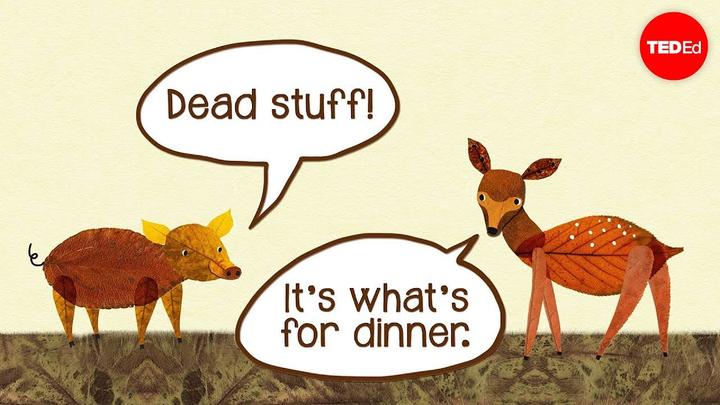View full lesson: http://ed.ted.com/lessons/dead-stuff-the-secret-ingredient-in-our-food-chain-john-c-moore
When you picture the lowest levels of the food chain, you might imagine herbivores happily munching on lush, living green plants. But this idyllic image leaves out a huge (and slightly less appetizing) source of nourishment: dead stuff. John C. Moore details the "brown food chain," explaining how such unlikely delicacies as pond scum and animal poop contribute enormous amounts of energy to our ecosystems.
Lesson by John C. Moore, animation by TED-Ed.
When you picture the lowest levels of the food chain, you might imagine herbivores happily munching on lush, living green plants. But this idyllic image leaves out a huge (and slightly less appetizing) source of nourishment: dead stuff. John C. Moore details the "brown food chain," explaining how such unlikely delicacies as pond scum and animal poop contribute enormous amounts of energy to our ecosystems.
Lesson by John C. Moore, animation by TED-Ed.
Video
Descripción
Dead stuff: The secret ingredient in our food chain - John C. Moore
Clasificaciones
Formato
Cursos / Niveles
Asignaturas / Ambitos
Eje
Licenciamiento
Licencia Youtube
Objetivos de aprendizaje del recurso
Objetivo de aprendizaje CN1M OA 04Basal CN1M OA 04
Investigar y explicar cómo se organizan e interactúan los seres vivos en diversos ecosistemas, a partir de ejemplos de Chile, considerando:
- Los niveles de organización de los seres vivos (como organismo, población, comunidad, ecosistema).
- Las interacciones biológicas (como depredación, competencia, comensalismo, mutualismo, parasitismo).
